- St. Cwyfan's Church at Night
- Pentax K-1 Camera used:
- Pentax FA 28-105mm f/3.5-5.6 Lens used:
- 24mm Focal length:
- f/2.8 Aperture:
- 20" Exposure time:
- 6400 ISO:
Anglesea Astrophotography & Sunrise
Hunting Welsh Dragons on the stunningly beautiful isle of Anglesey, Wales UK
The most recognisable church on Anglesey, St. Cwyfan's, is popularly known as the Church in the Sea (or eglwys bach y mor in Welsh). Perched on a tiny island called Cribinau, encircled by a sea wall, this simple medieval church dates to the 12th century.
Reminding me of the Church Of The Good Shepard in New Zealand, and due to its position I have seen some stunning night sky photos from here, many of which involving the Milky Way, unfortunately the centrepiece and perhaps the most majestic part of the Milky Way, the Galactic Core, is not fully visible in the Northern hemisphere at the time of this adventure in March even so, this location on a clear starry night is a spectacle to behold. And so this was the first stop on our Anglesea Astrophotography & Sunrise adventure.
Photographing the night sky
The drive from our homes in Worcestershire to St. Cwyfan's takes around 3 hours and 30 mins, its a good drive regardless of the time of day, we left around midnight and thankfully any delays or roadworks were limited, thus we found ourselves arriving at our destination Ty Croes LL63 5YR (opens in google maps) with space for a 3 of 4 cars to park at around 03:15 am. A quick warming cup of tea from my Thermos flask (one should never under estimate the benefits of a hot drink!) and then we picked up our camera bags, tripods, hat and gloves from the boot of the car, and set off on foot down towards the beach and the sounds of the sea, so very exciting.
Walking north westerly around the coast line, for a few minutes you eventually reach the causeway, this was built to allow parishioners to get to the island church. It's remains are visible in the photo above. However, even with the causeway, sometimes high tides prevent access. Please note, there is very little in the way of ambient light a St. Cwyfan's, so at night, extra care needs to be taken, the causeway surface is uneven, potholed and weather to say the least. Once we reached the cause way it was time to get the cameras out. Now, the aforementioned potholes more like rockpools, many are deep and filled with sea water, so when placing your camera bag down on the ground always double check that your not inadvertently placing it in to a mini rock pool. Sea water and cameras don't mix well!
Access to the church is at the far end of the causeway, so you do have to walk out a little bit, it really does feel as path of pilgrimage as your walking further into the sea, with the water becoming deeper and deep either side of the rocky path as it narrows, the sounds of the waves crashing also intensifies really hamming up the trepidation but once at the island church there is a stairway cut in to the sea wall to climb and a handrail for support offering sanctuary, sorry to good to resist that one..
On top of the Island there a couple of benches in which to either sit and admire the views on a clear day or to lay your bags and equipment. Obviously for us, there are not many church goers at 04:00 am so your bags are quite safe, the view out to sea and back to the main land was of little note in the darkness of the early hours, but the view of the night sky was simply breathtaking. During daylight hours the views to the mainland and out to see are breathtaking.
Several photographers have managed to capture the Aurora Borealis aka the Northern Lights from St. Cwyfan's and even more so from Anglesey itself, and although not forecast, I managed to capture a minty green hue to one or two of my images, much to the protest of Mark who pointed out the fact we were far to south to see the lights, still, I'm sure you will agree, there is a definite minty glow to the night sky.
Whilst walking about the Island, care should be taken in where you place your footing, it would be very easy for one whilst composing that perfect shot to step off the edge, and fall 15ft of so into the sea or worse still the rocks below, the outcome and severity of the fall will vary on the tide.
After enjoying several shots of the church, it was time to retrace our steps back to the car and then move on to our second planned location Penmon Lighthouse for sunrise at 07:00
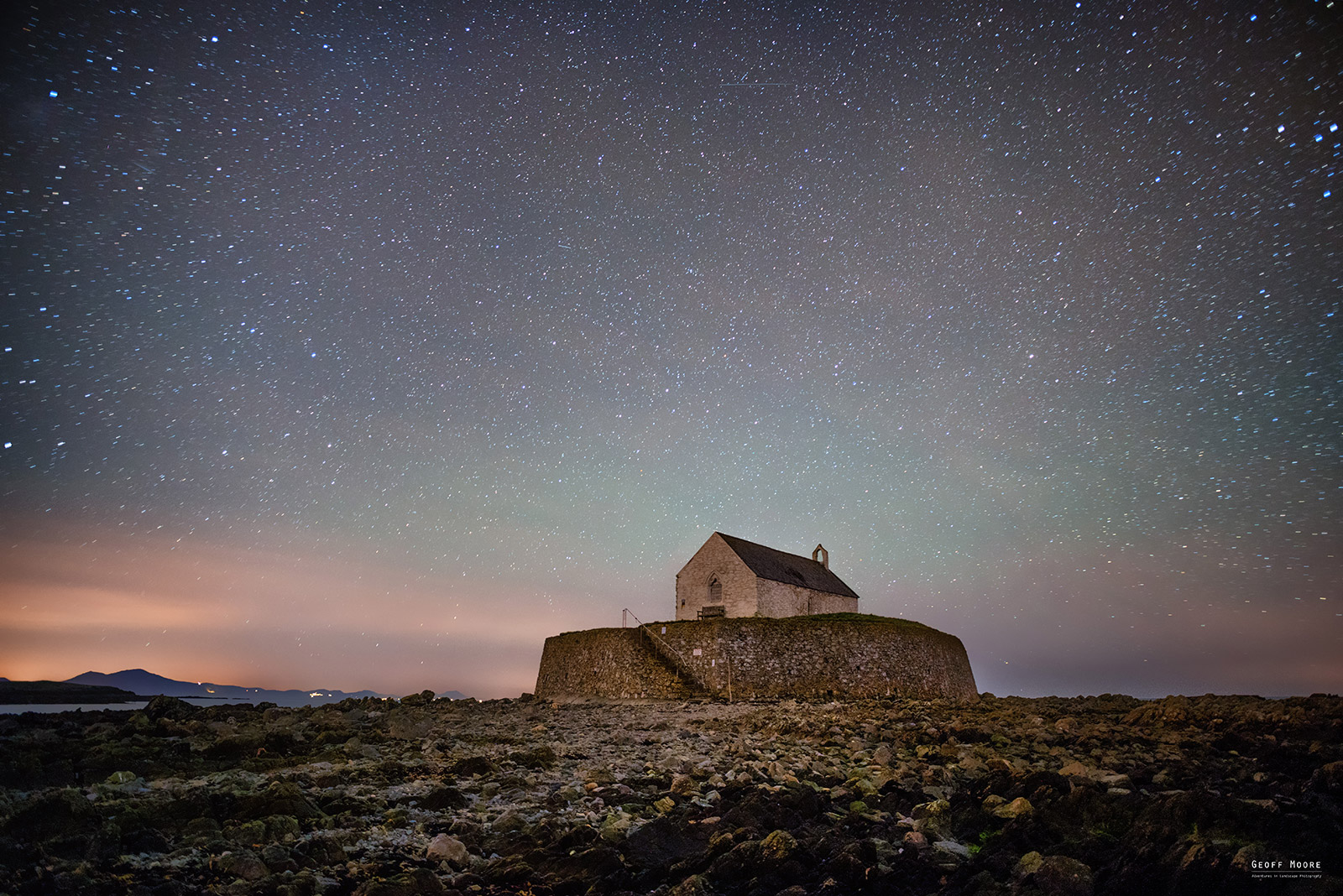
- A Rocky Church & A Minty Night Sky
- Pentax K-1 Camera used:
- Sigma Super Wide II 24mm 2.8 Lens used:
- 24mm Focal length:
- f/2.8 Aperture:
- 15 Exposure time:
- 3200 ISO:
The drive from St. Cwfans to Penmon is around 49 min (28.8 mi) via N Wales Expy/A55 and is easily accessible by car. Please take this as fair warning, at Penmon Point no overnight parking is permitted and access is apparently on private land which result in you having to pay a Toll to the land owner. What happens to your money after this point is open to discussion, according to the reviews on Trip Advisor
At the time of my visit this was around £2.50 and although fine, little of this money it would appear to go towards maintaining the parking spaces etc. I would also suggest you bring a long with you a your banter hat, as the chap who will take your money is rather on the interesting side lets say. I suspect he means well and is just misunderstood.
Having reached Penmon point a little before sunrise, with the tide retreating it was then a case of making our way down from the impoverished car park and down to the edge of the rock pools to photograph the lighthouse. The rocks are extremely slippy and blanketed in green algae and moss like aquatic plant life, making even the surest of footing at risk of slippage. Risk of a broken ankle is high, risk of getting wet, guaranteed. The lack of light made for a tricky decent. Once you have found your footing, the photographs are a little limited (most of the year - continue reading) to the actual lighthouse, puffin island and a stone beach, although these in themselves, in the environment in which they sit are very picturesque! Note: the wind can be quite cutting so if visiting pack an additional jumper or jacket to be on the warm side.
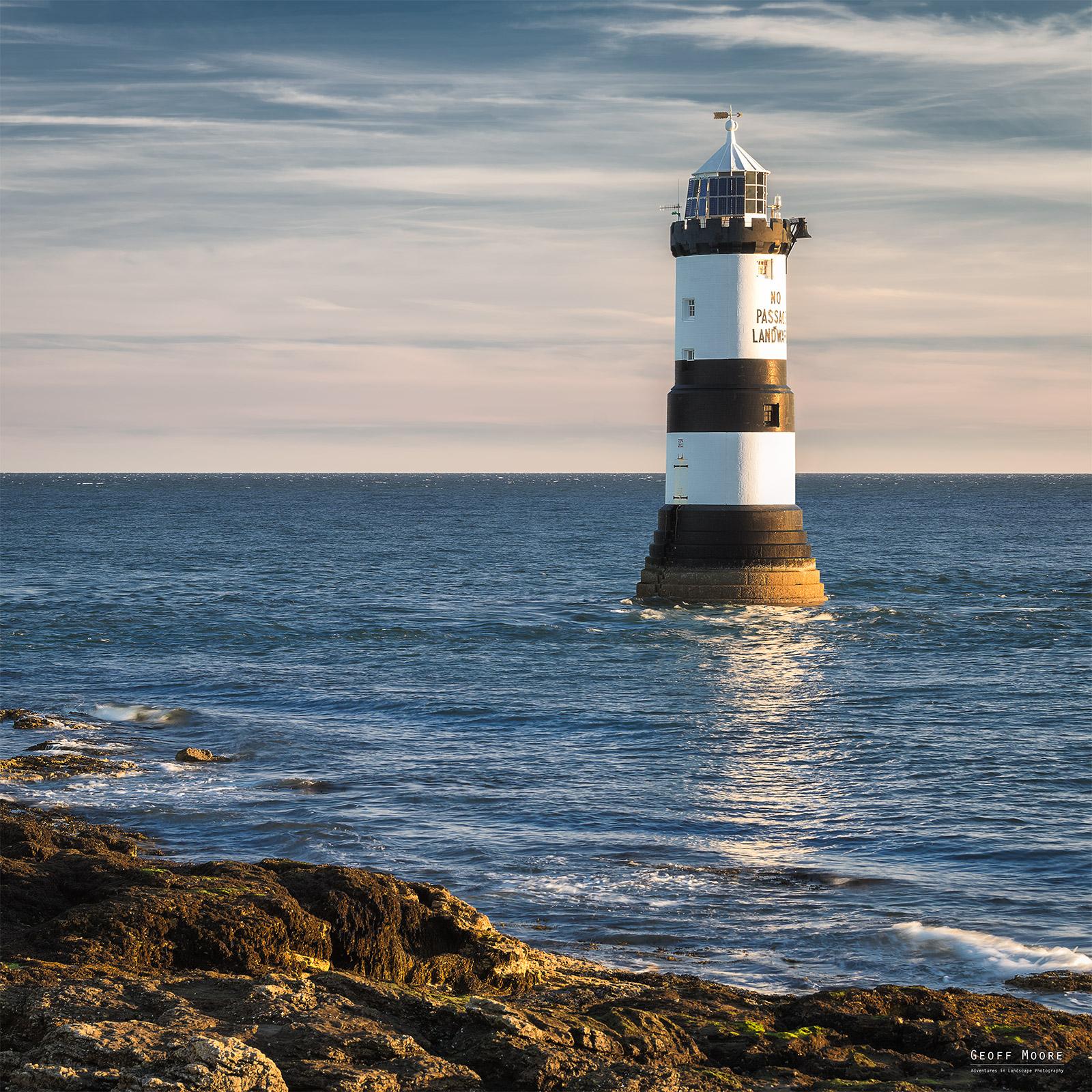
- Penmon Postcard
- Canon 7d Mark2 Camera used:
- Canon 70-200mm F4 IS Lens used:
- 70mm Focal length:
- f/11 Aperture:
- 1/6 Exposure time:
- 100 ISO:
Relaxed Photography
There is something very special about watching the stars of the night sky fade away and replaced by the growing light of the new day and Penmon point is no exception to this. There is a sense of tranquillity to the location, sometimes though this can fool you into to forgetting to take photos, and for me, my favorite photo from Pennon Point is also my worst, due to missing the shot I had wanted by 10 mins. Staring up at the stars with the waves of the sea lapping at the rocks below can be quite hypnotic. Still I have included the photo above, I hope you see its potential.
After taking several long exposures and missing many more, The breaking dawn called time on the adventure and we retired back to the adventure wagon for a mini fry up on the camp stove before heading off for home.
As a side note, I mentioned earlier in my write up that the location is limited most of the year from a photographic perspective, well, if you are lucky, the exception to the rule is that glowing plankton can be seen at twilight in the summer months, particularly at high tide, created by bio-luminescence plankton, which emit light like fireflies when they are disturbed by the tide. A fellow photographer by the name of Kris Williams, one whose work I admire greatly has managed to capture this in his stunning photography and time lapses.
History of Penmon Lighthouse
Trwyn Du Lighthouse is a lighthouse between Dinmor Point near Penmon and Ynys Seriol, or Puffin Island, at the eastern extremity of Anglesey, marking the passage between the two islands.
The first lighthouse was erected in 1838 shortly after a ship ran aground causing 130 people to loose their lives. The ship that sank was called the Rothsay Castle and sank in 1831. The present lighthouse is 29 metres tall & was designed by James Walker & built in 1835-1838. The lamp was converted to solar power in 1996.At present the Lighthouse has a 15,000 candela light that can be seen 12 nautical miles away & a 178 kilogram fog bell that sounds once every 30 seconds.
Penmon also has an award-winning beach and the Anglesey Coastal Path follows its shores. Quarries in Penmon have provided stone for many important buildings and structures, including Birmingham Town Hall and the two bridges that cross the Menai Strait. The area is popular with locals and visitors alike for its monuments, tranquillity, bracing air and fine views of Snowdonia to the south across the Menai Strait.
Anglesey is an island off the north-west coast of Wales. With an area of 276 square miles, Anglesey is by far the largest island of Wales and the seventh-largest island in the British Isles.
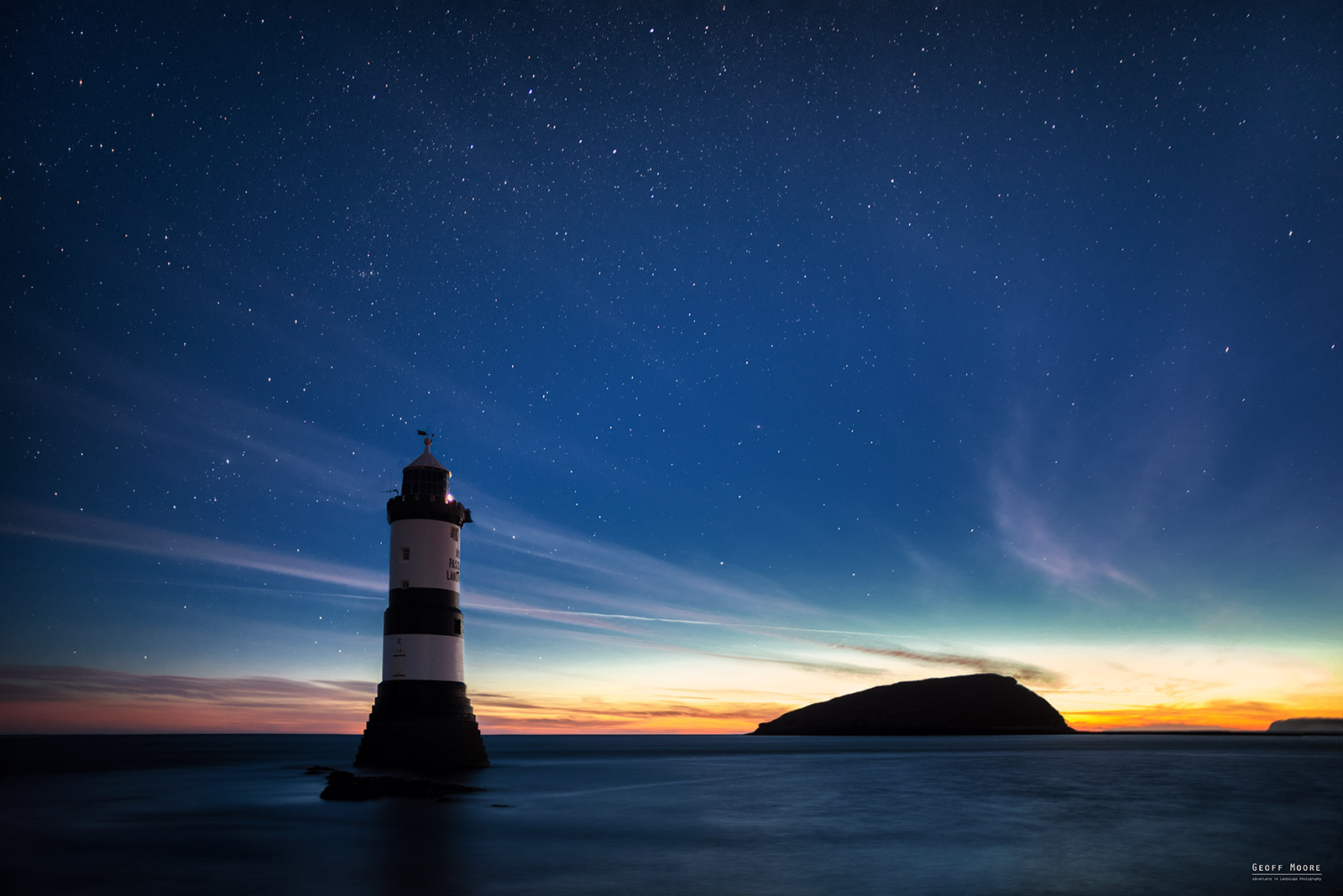
- Breaking Dawn
- Pentax K-1 Camera used:
- Sigma Super Wide II 24mm 2.8 Lens used:
- 24mm Focal length:
- f/2.8 Aperture:
- 180" Exposure time:
- 100 ISO:
Other Images from this adventure
How to get here
Enter your starting location on the box provided under the map to see the route from your starting location to St Cwyfan's Church, Llangwyfan
Recent Photography Adventures
Why not read about some of my other photography adventures around the UK

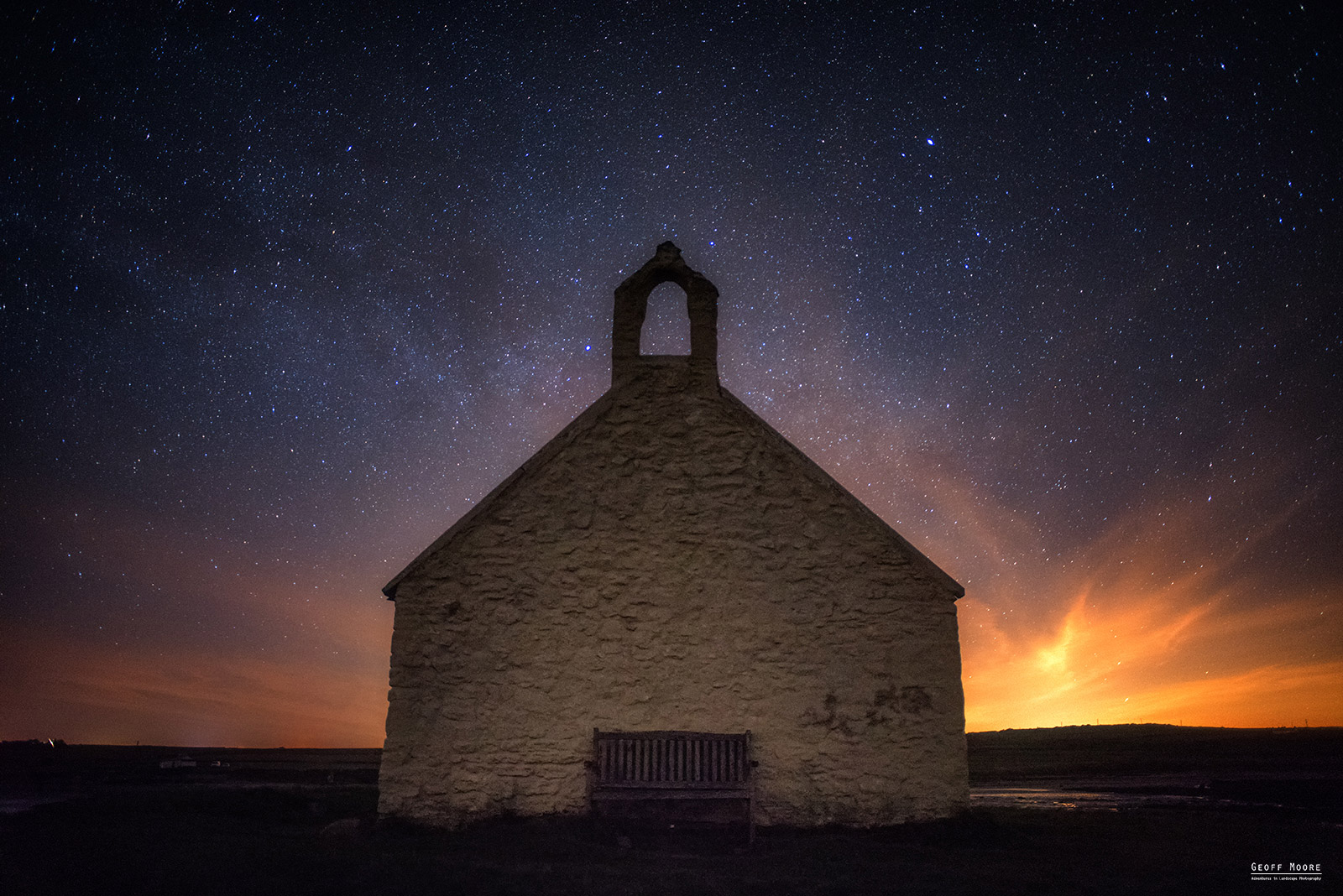
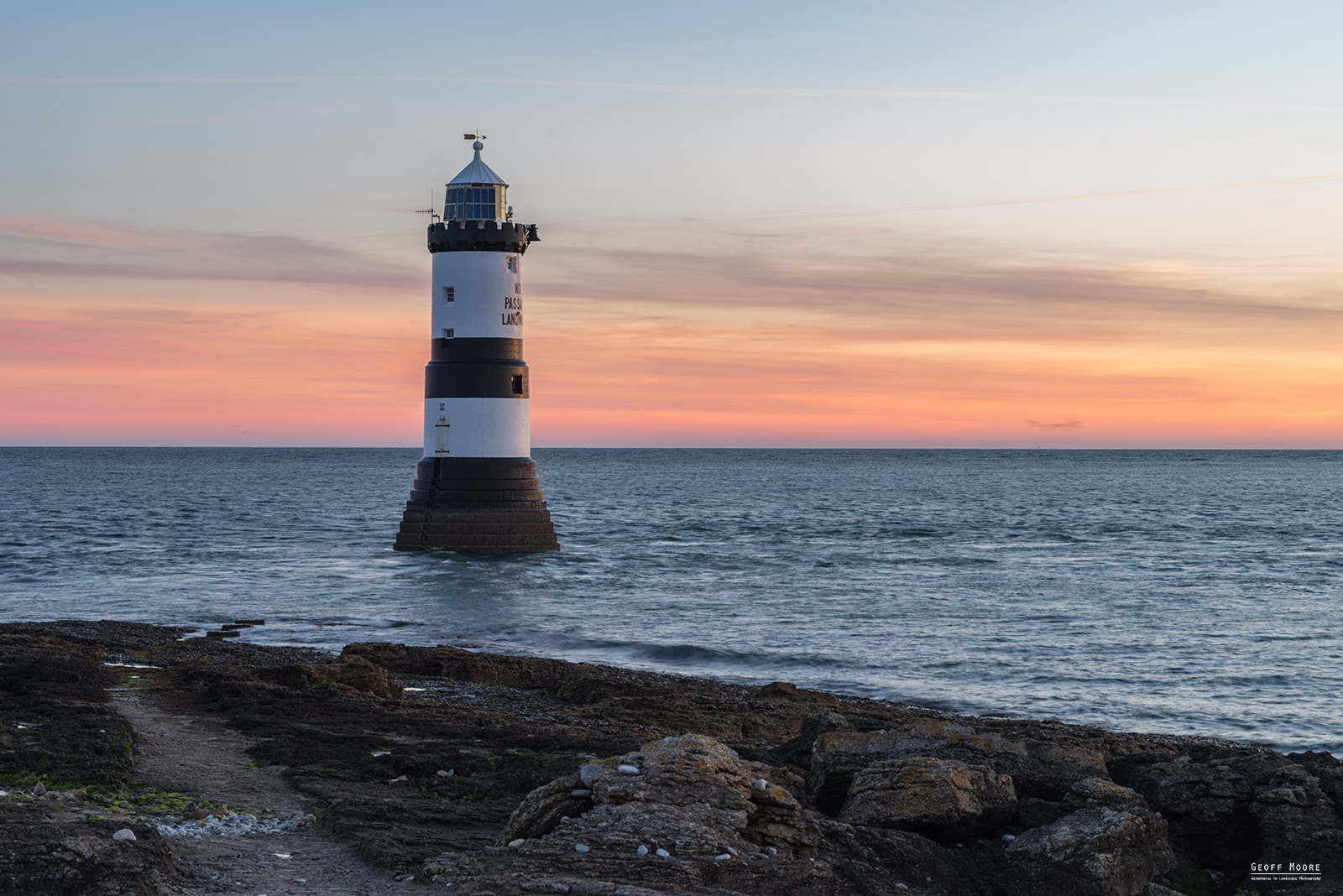
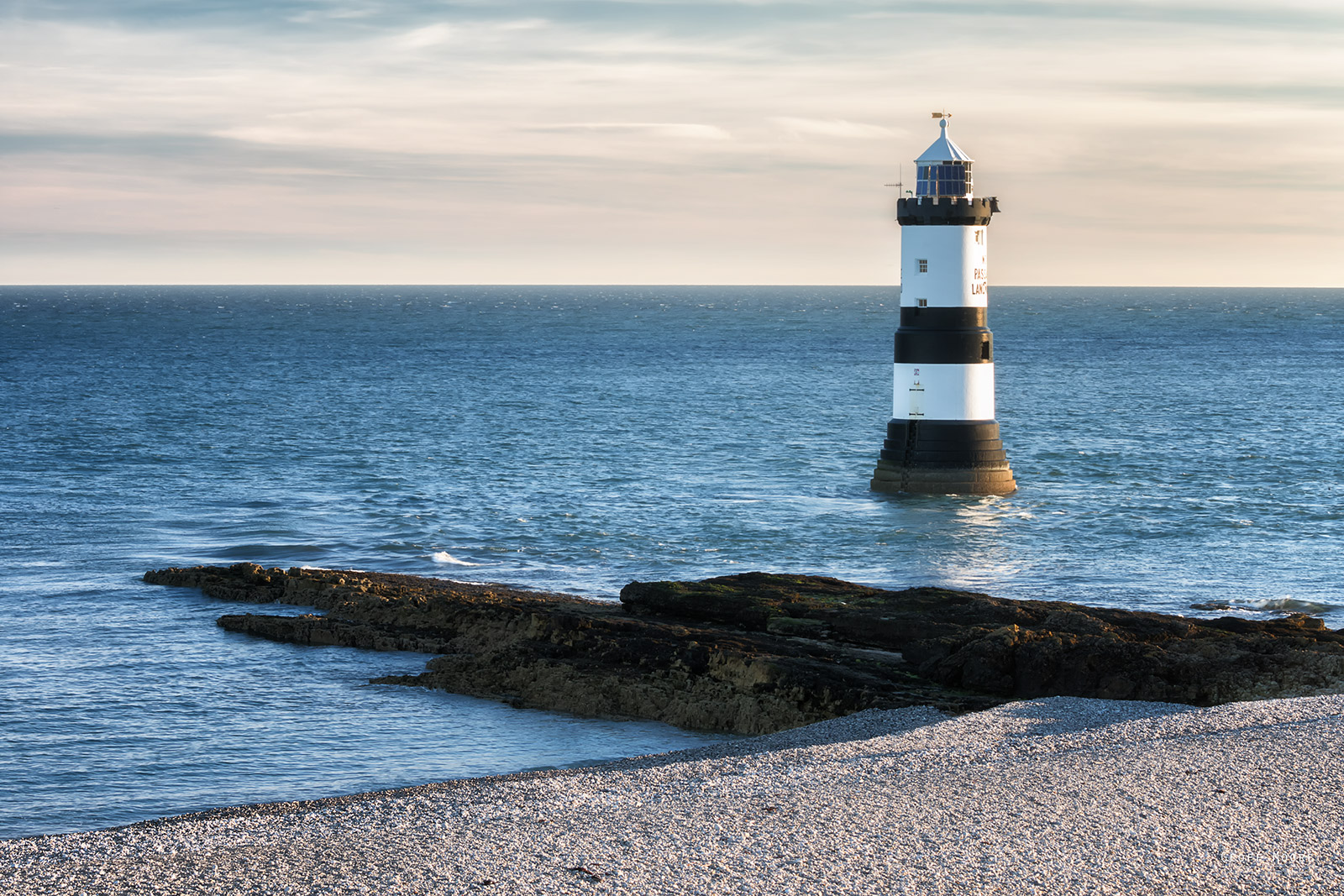
Leave a comment